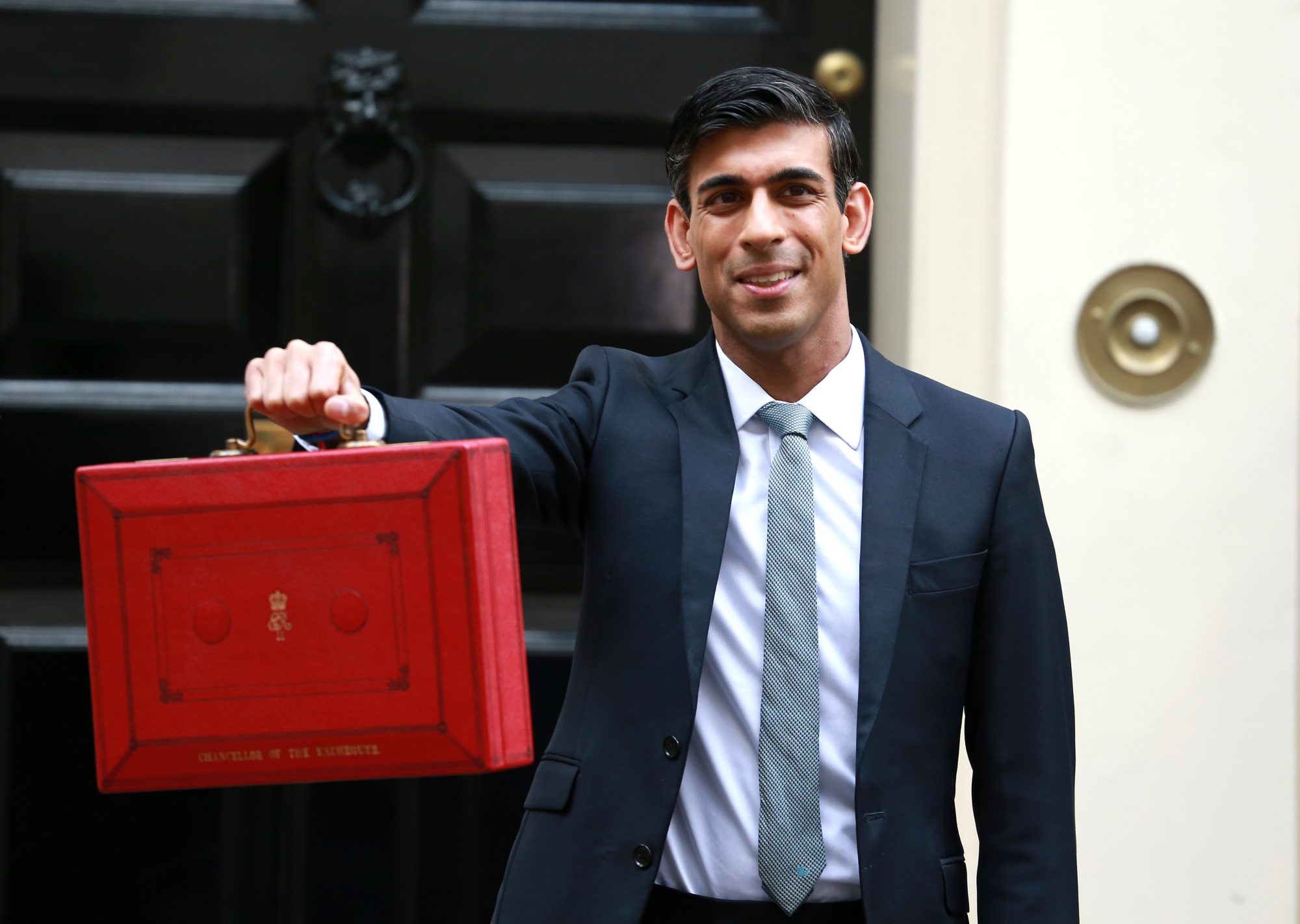Following the trials and tribulations of 2020, 2021 was always going to be a big year for business, the economy and, as a result, research and development.
So, as we head into the new year, we thought we’d take a look back at the progress made in 2021, recapping all of the important events impacting the UK Government’s R&D tax credit incentives.
From the 2021 Budget to the progress made on the R&D roadmap, here’s the story of R&D in 2021.
Covid uncertainties continued
With the UK starting the year in lockdown and the economic impact on businesses being more than apparent, some government-funded Covid-19 business support continued into 2021.
Some of this financial support affected the R&D priorities and capabilities of many businesses - perhaps most notable of all was the extension of the Coronavirus Job Retention Scheme (CJRS).
As the furlough deadline was extended to 30th September, many businesses continued to lack the in-house manpower to pursue more ambitious R&D projects. Furthermore, some businesses had to furlough technical staff (the ‘competent professionals’) who were vital to the success of a claim, leading many to pause major R&D activities until the right staff had returned.
Elsewhere, government-funded Covid grants and loans continued to impact the eligibility of R&D claims. From bounce-back loans (BBL) to Innovate UK grants, some additional business funding conflicted with eligibility criteria surrounding notified state aid (NSA) and R&D tax credits. This led some businesses to leave innovation on the back burner in 2021.

The budget shone the spotlight on R&D
In March of 2021, Chancellor Rishi Sunak announced the annual UK Budget. This year, there were a range of specific measures introduced to encourage business innovation, with the Government recognising the importance of innovation (and R&D) to our economic recovery.
Among these new measures was the launch of a consultation surrounding R&D tax reliefs and the current R&D tax incentive schemes. Evaluating both the SME and RDEC schemes, the consultation aimed to ensure the UK’s R&D schemes remain contemporary and competitive on the global stage. This consultation ended on 2nd June and, as of the time of writing, the outcomes are yet to be formally published.
Elsewhere in the Budget, it was announced that the UK Government also planned to scrutinise the effectiveness of the current system, following regular intentional system abuse and fraud. New measures look set to be introduced to ensure that research and development funding goes only to eligible parties.
An accompanying government press release to the 2021 Budget outlined how UK public investment in R&D has risen approximately 13%, from £13.2bn in 2020/21 to £14.6bn in 2021/22. This included a £1.1bn increase in the overall R&D budget for the Department for Business, Energy and Industrial Strategy (DBEIS) when compared to the previous financial year. However, this was contrasted with a £403m reduction in the UK Research and Innovation (UKRI) budget - a 5% decline on that of the previous year.

We saw deductions, extensions and alterations
There were some updates to the amount of payable R&D tax credits (loss surrender) an SME can receive in a single year. The figure is now capped at £20,000, plus 300% of total pay - affecting loss-making SMEs looking to claim a value of over £20,000.
Meanwhile, a 130% ‘super deduction’ was introduced to stimulate investments in ‘productivity-enhancing plant and machinery assets’. Qualifying expenditure across a temporary two-year window may be entitled to a 130% capital allowance on plant and machinery investments (or a 50% first-year allowance if these investments also qualify under special rate assets).
In response to the continued economic impact of the pandemic, we also saw the introduction of
the 2021 Finance Bill, which included temporary legislation that extended the time period across which trading losses can be carried back against profits of earlier years. This extension now means applicable companies (those making losses who historically made profits) can carry trading losses made between 1st April 2020 and 31st March 2022.
New funding opportunities became available
A £375m nationwide scheme, Future Fund: Breakthrough, was launched in July to encourage private investors to co-invest with the Government in high-growth, innovative firms.
The fund was intended to support the scaling of UK-based, R&D-intensive businesses by providing more upfront capital for innovative pursuits.
The logic here was simple: by providing more upfront support and incentive to innovate, companies and industries would grow at a far faster rate, generating jobs and boosting financial gains as a result.
The UK also became part of Horizon Europe: an EU research and innovation programme with a budget of €95.5bn. Funding is available to UK-based applicants for:
- excellent research in any field
- researcher mobility
- research infrastructure
- global challenges and industrial competitiveness
- innovation
- the development of European research and innovation systems

We learnt how the R&D roadmap was received
Originally published in 2020, the UK Government’s R&D roadmap (a 60-page paper published by DBEIS) sets out a clear vision for the future of innovation through a scientific and technology-focused UK economy.
As the UK Government put it themselves:
“The Roadmap looks at our whole system of science, research and innovation to release its potential, to unlock and embrace talent, diversity, resilience and adaptability, and to tackle the biggest challenges of today and tomorrow.”
At the start of 2021, the Government published the outcomes of a survey conducted into the response to this roadmap from businesses big and small across a broad range of industries. They identified a series of recurring themes:
- The importance of long-term and sustainable funding
- Greater support for collaboration and knowledge exchange across the R&D landscape
- A strategic, long-term approach to set a clear direction for the UK
- An improved research and innovation culture, proactively supporting and developing diversity at all levels across the sector
- Continued support for education, training and skills, with the ability to acquire new skills across all regions of the UK

We learned what progress had been made
We’ve seen a number of steps taken by the UK Government to address some of the recurring themes in businesses’ response to the R&D roadmap and wider attitudes to research and development in the UK.
Firstly, there were a range of investments to support education, training and skill development, including awarding 101 Future Leaders Fellowships worth £109m. Elsewhere, pilot schemes (such as the Innovation Scholars pilot) were launched to support the development of research skills in specific industries and sectors.
To assist businesses in actively investing in R&D, we also saw programmes such as Measurement for Recovery (M4R). M4R has supported more than 400 businesses across the UK, matching them with world-leading measurement scientists, techniques and technologies only available at the National Physical Laboratory and partner laboratories.
This programme was complemented by the introduction of the Innovation Expert Group, a collection of R&D experts who will advise on how to drive UK productivity through innovation. Alongside this, as first announced during London Tech Week, £147m was made available for the Manufacturing Made Smarter Challenge, which will support businesses in implementing digital technologies to boost their manufacturing productivity.
To tackle the impact of the North/South divide on nationwide R&D progress, the Government has also considered research and development in their recent ‘levelling up’ initiatives. The R&D Place Advisory Group was established to propose, challenge and test policy options to optimise R&D potential and support local economies.
To further this, Strength in Places funding was awarded to 17 innovative projects across the UK, financing the development of full funding proposals with a chance for further funding of £10-£50m in the long term.
The forecast
So, as we enter 2022, what will the coming months look like when it comes to research and development in the UK?
Well, as economic recovery continues and the Government appears to remain committed to its R&D investment target of £22bn per year by 2024/25, now could be the time to put R&D back on your business’s map.
Remember: it’s estimated that between £1.53 and £2.35 is generated for every £1 reclaimed through the R&D scheme.
For businesses still feeling the effects of Covid-19, research and development could offer a range of opportunities as you head into the new year. One of R&D’s greatest draws is that it acts as a type of financial stimulation - any money spent is offset by significant tax relief. So, with the right know-how, investing in R&D can improve your business’s cash flow.
With this in mind, close out the year by reviewing all of your business’s activities throughout the year - could anything qualify as R&D expenditure? R&D tax credits can be claimed retrospectively, so make sure you’re taking advantage of the relief available to you.
Look to proactively invest in new research and development opportunities as we enter 2022, too. Investing now places your business at the forefront of its industry and ensures you have the resources (materials, knowledge, skillset) for future projects.
As exciting new technologies and further investment opportunities come to the foreground in 2022 and beyond, R&D may be the answer to a more reactive, adaptable, profitable and forward-thinking business.
Ensure you’re maximising your research and development funding as we enter the new year by getting your claims right the first time. For a helping hand, get in touch with Lumo to learn how we can help today.